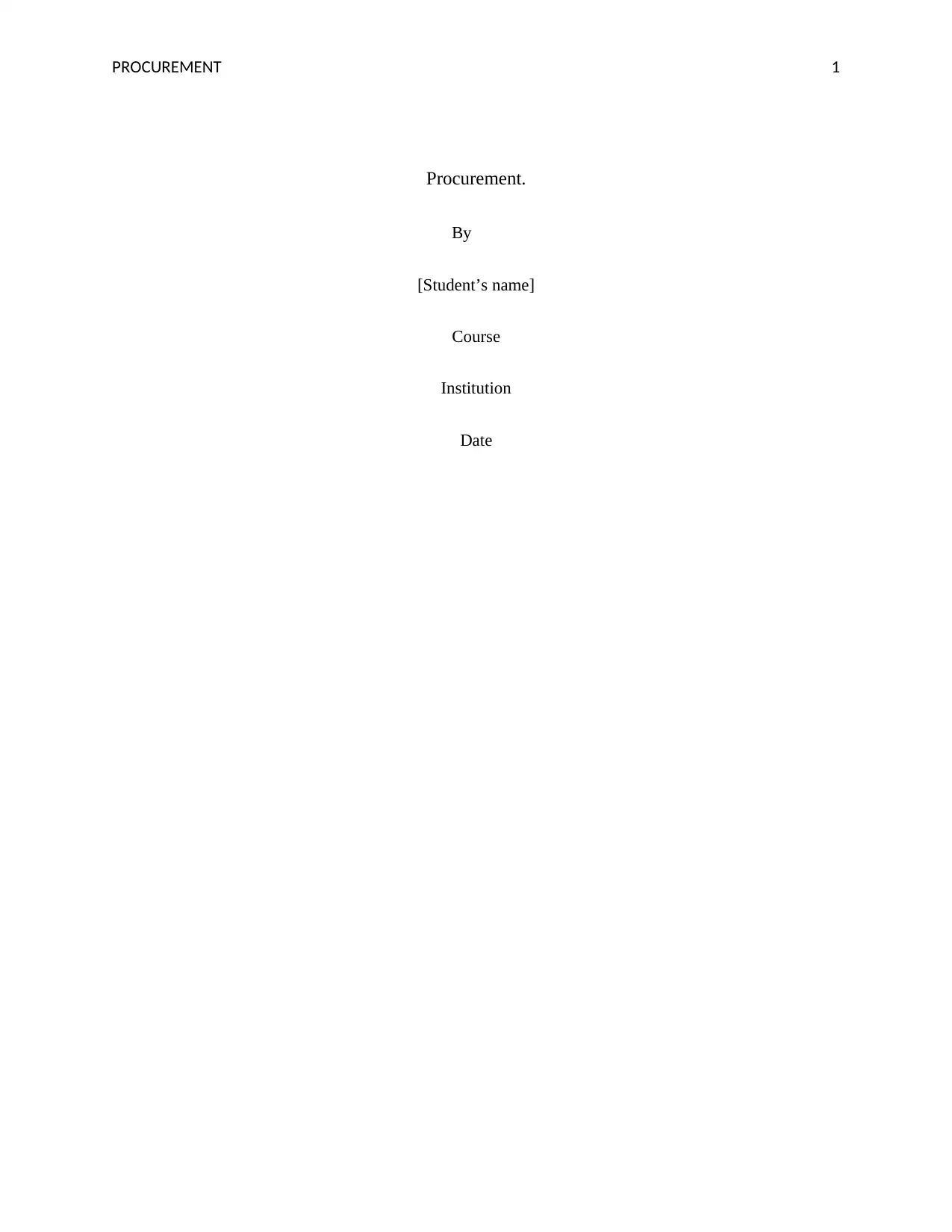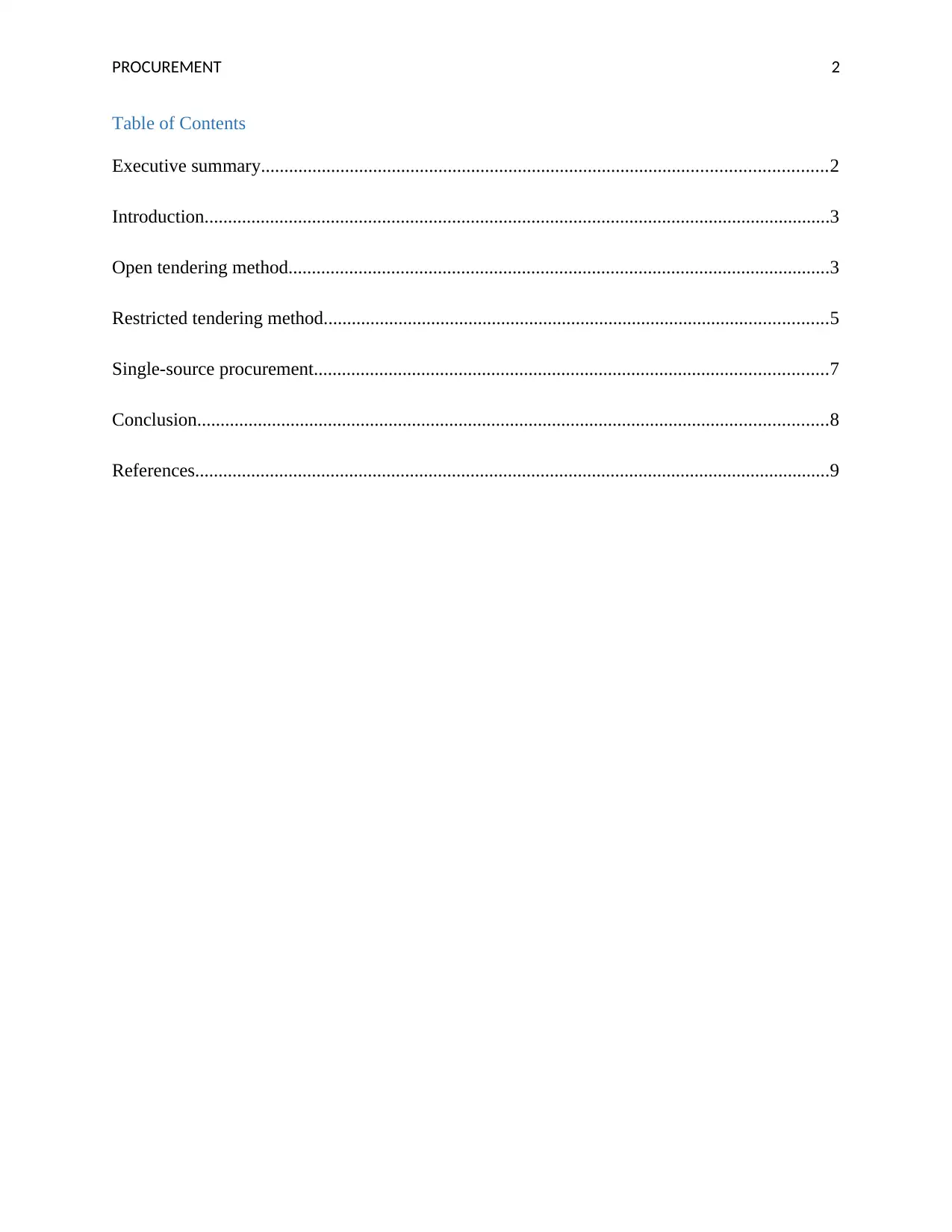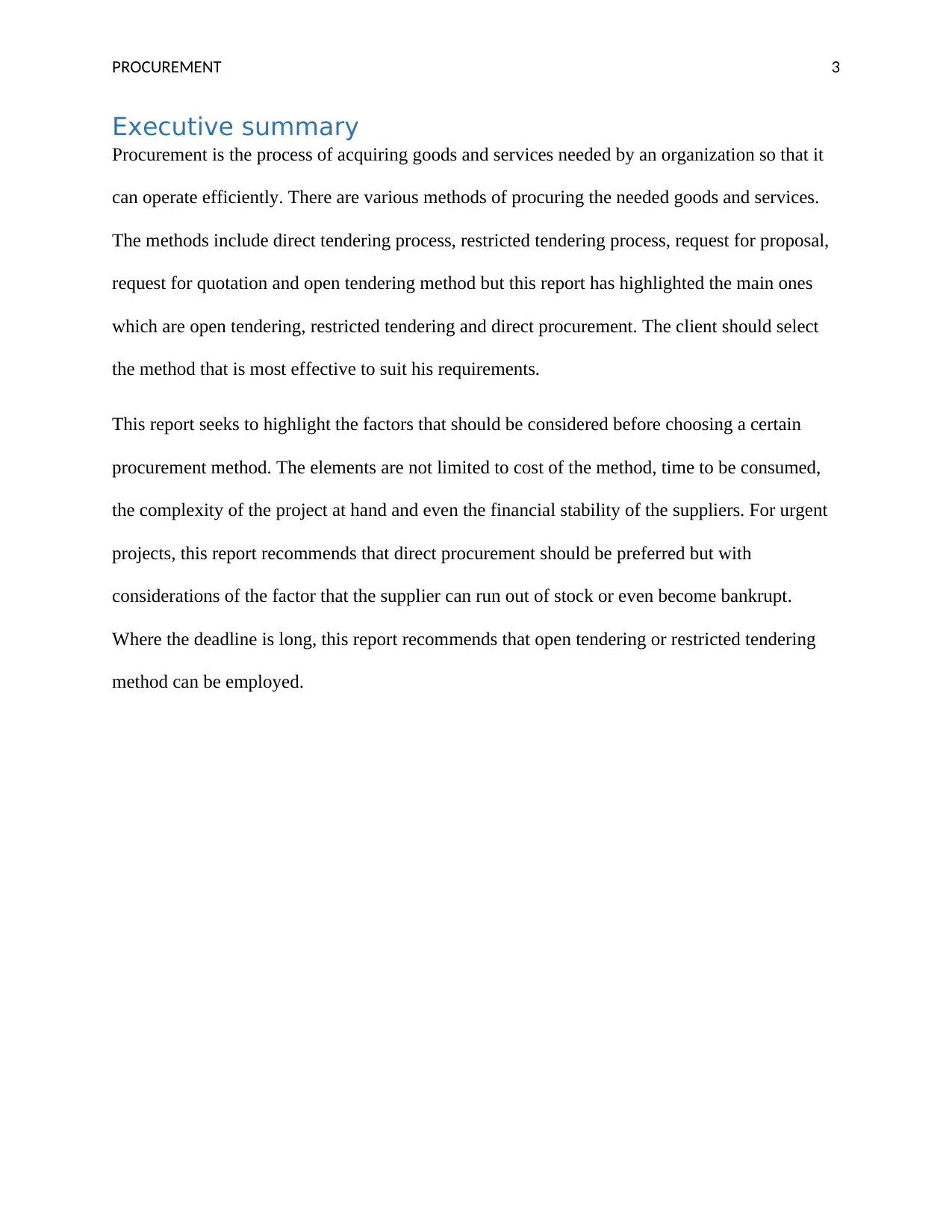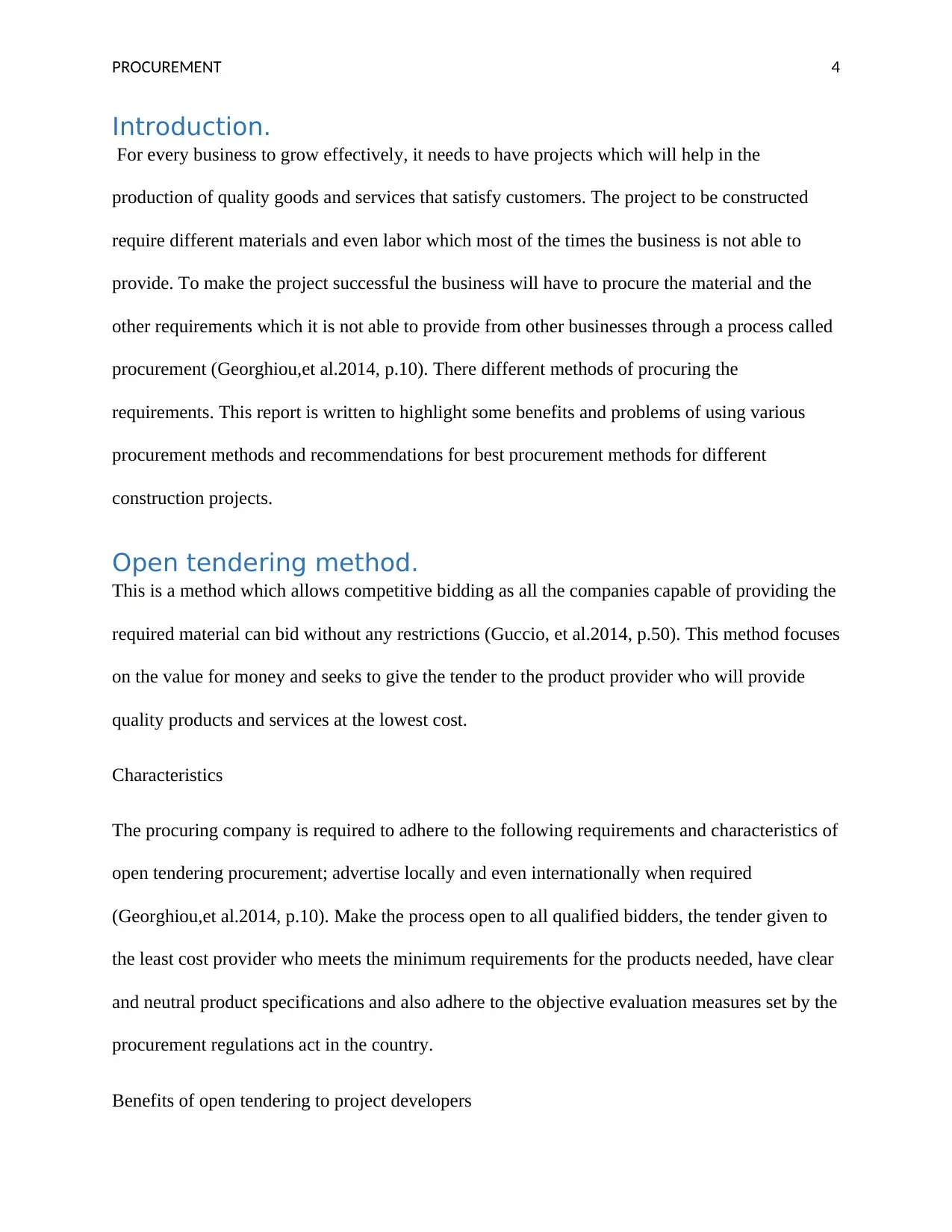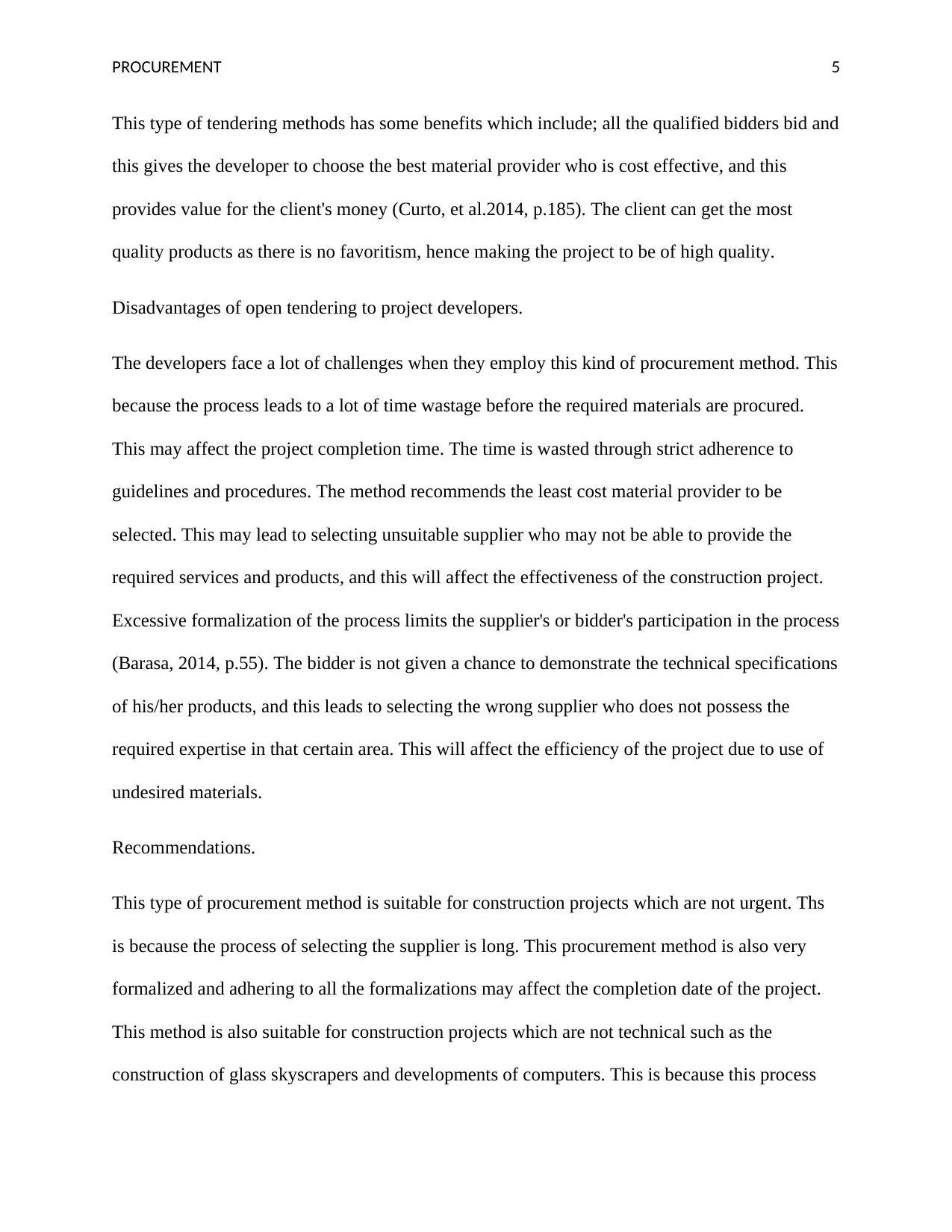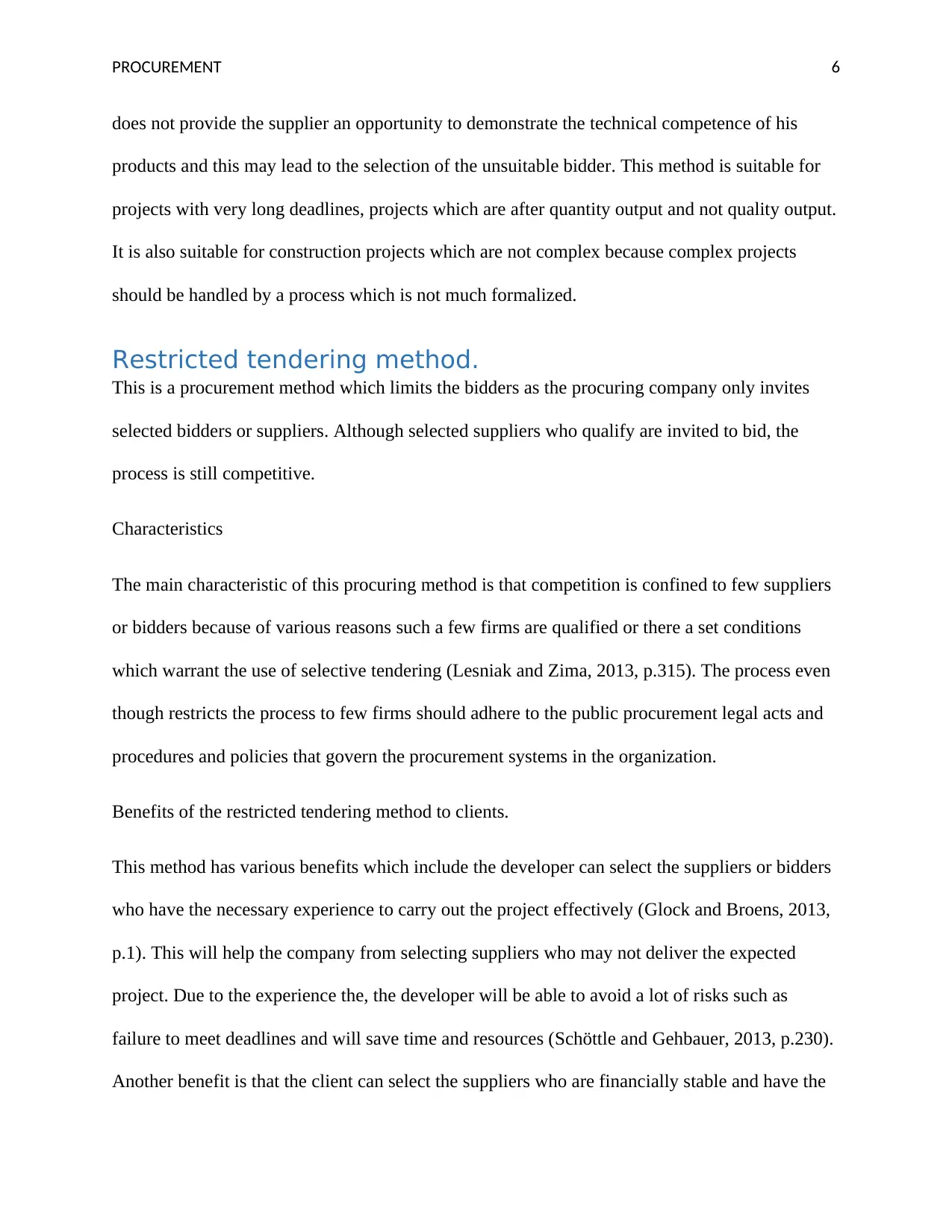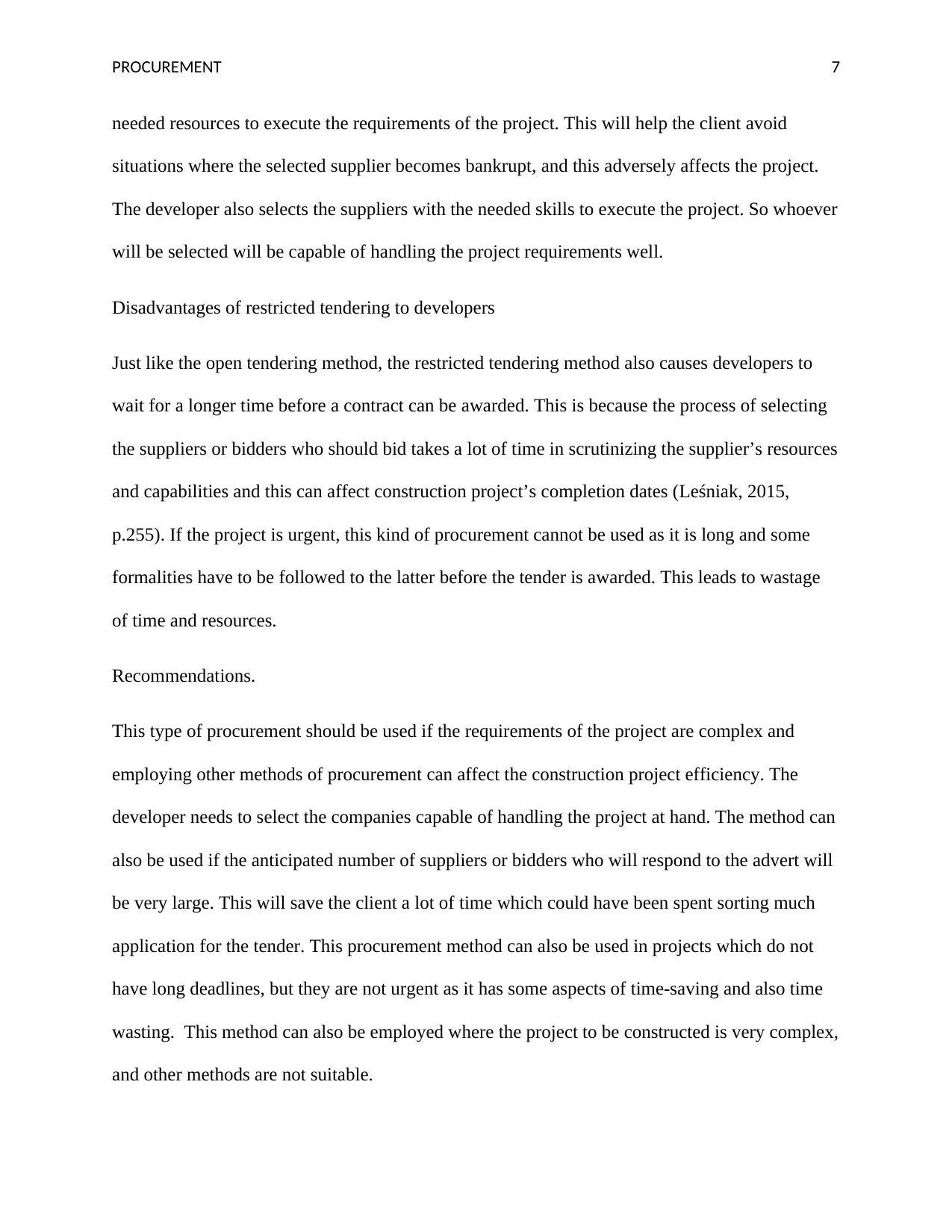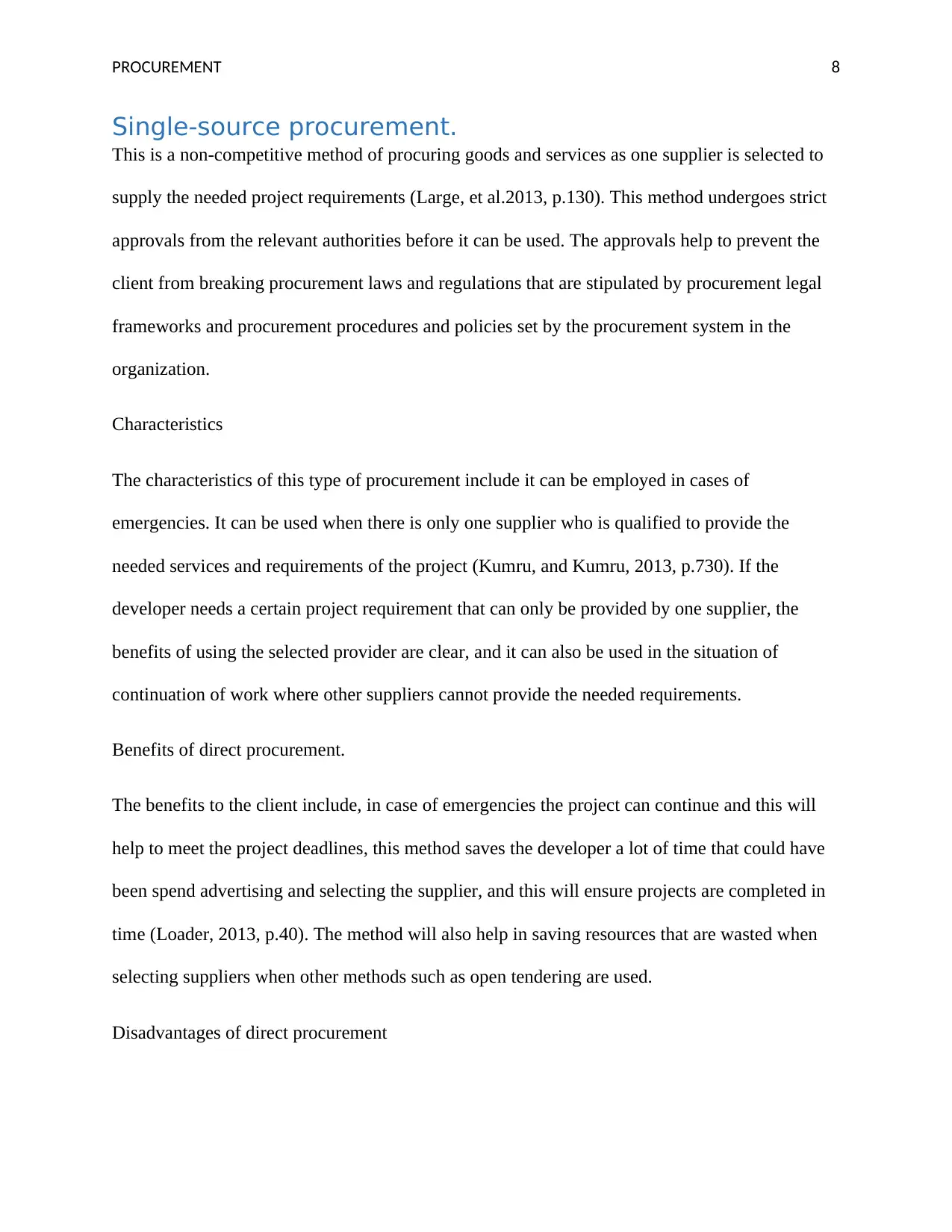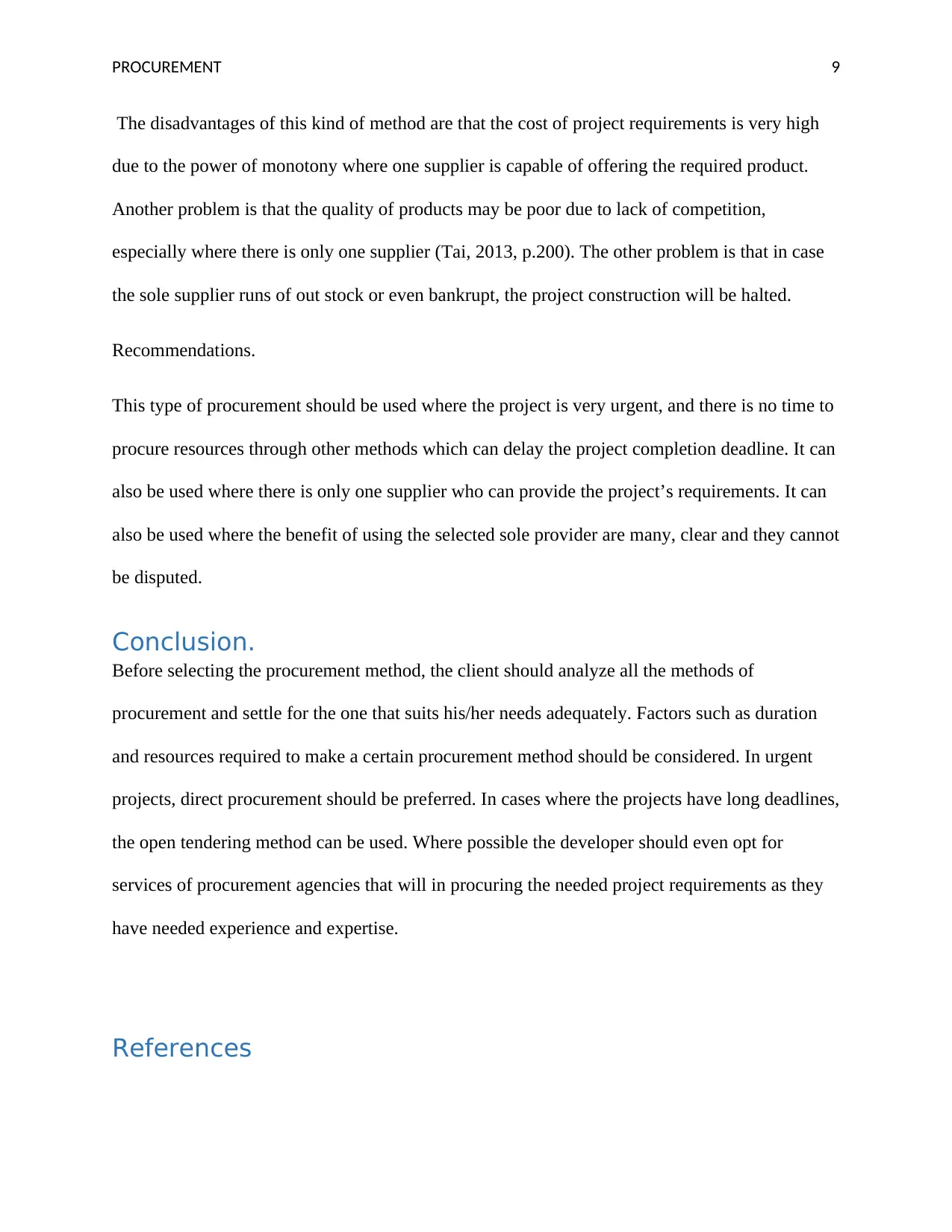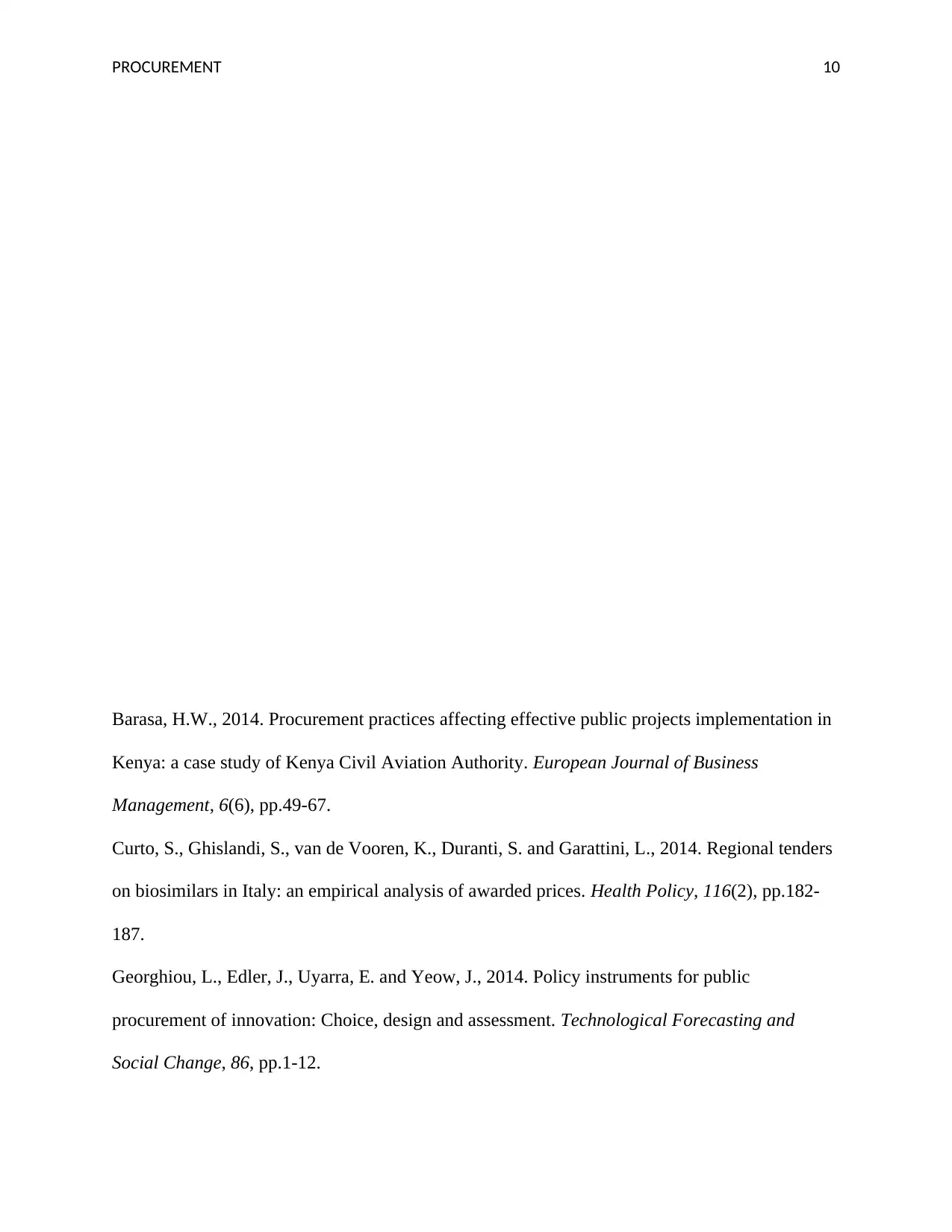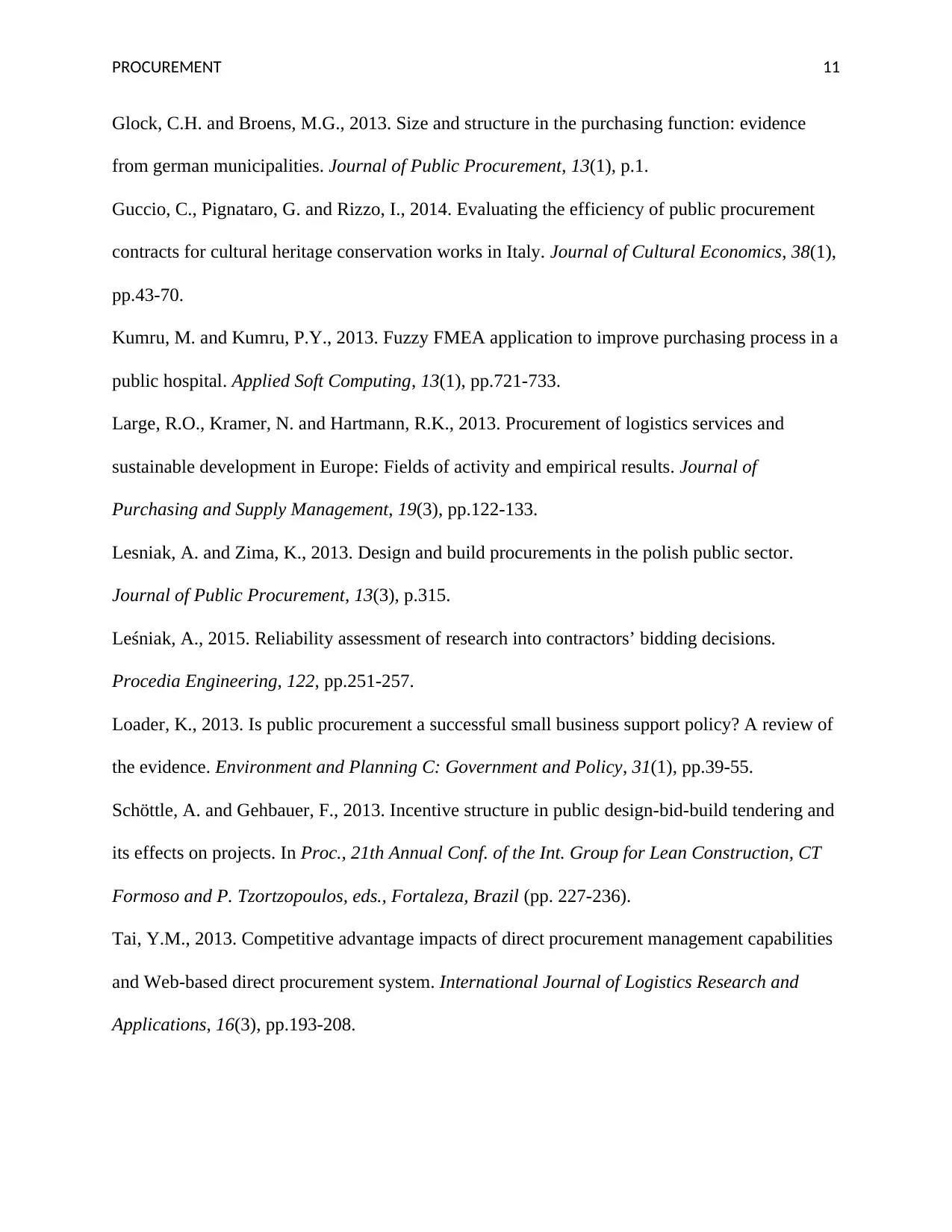This assignment discusses the advantages and disadvantages of direct procurement as a method for obtaining project requirements in construction projects. Direct procurement refers to the process where a client selects a single supplier to provide all the necessary resources without going through an open tendering process. The advantages of this method include reduced time spent on advertising and selecting suppliers, allowing the project to continue in case of emergencies, and saving resources that would be wasted through other methods like open tendering. However, the disadvantages include high costs due to lack of competition, potential poor quality of products, and risk of the sole supplier running out of stock or becoming bankrupt. The assignment concludes by recommending direct procurement for urgent projects or where there is only one suitable supplier, but suggests considering alternative methods like open tendering for non-urgent projects.
![[object Object]](/_next/static/media/star-bottom.7253800d.svg)
![[object Object]](/_next/static/media/star-bottom.7253800d.svg)
